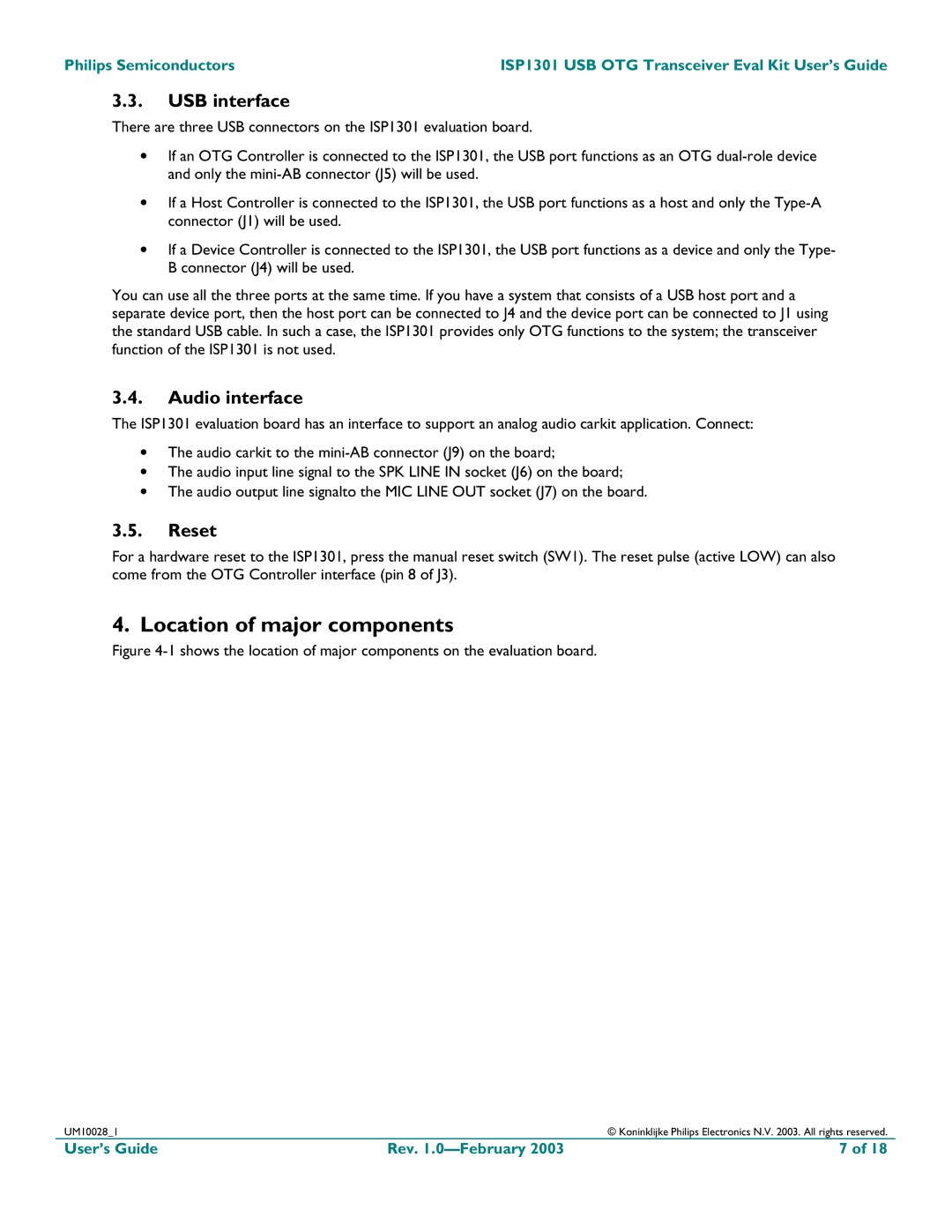Philips Semiconductors | ISP1301 USB OTG Transceiver Eval Kit User’s Guide |
3.3.USB interface
There are three USB connectors on the ISP1301 evaluation board.
•If an OTG Controller is connected to the ISP1301, the USB port functions as an OTG
•If a Host Controller is connected to the ISP1301, the USB port functions as a host and only the
•If a Device Controller is connected to the ISP1301, the USB port functions as a device and only the Type- B connector (J4) will be used.
You can use all the three ports at the same time. If you have a system that consists of a USB host port and a separate device port, then the host port can be connected to J4 and the device port can be connected to J1 using the standard USB cable. In such a case, the ISP1301 provides only OTG functions to the system; the transceiver function of the ISP1301 is not used.
3.4.Audio interface
The ISP1301 evaluation board has an interface to support an analog audio carkit application. Connect:
•The audio carkit to the
•The audio input line signal to the SPK LINE IN socket (J6) on the board;
•The audio output line signalto the MIC LINE OUT socket (J7) on the board.
3.5.Reset
For a hardware reset to the ISP1301, press the manual reset switch (SW1). The reset pulse (active LOW) can also come from the OTG Controller interface (pin 8 of J3).
4. Location of major components
Figure 4-1 shows the location of major components on the evaluation board.
UM10028_1 |
| © Koninklijke Philips Electronics N.V. 2003. All rights reserved. |
User’s Guide | Rev. | 7 of 18 |
